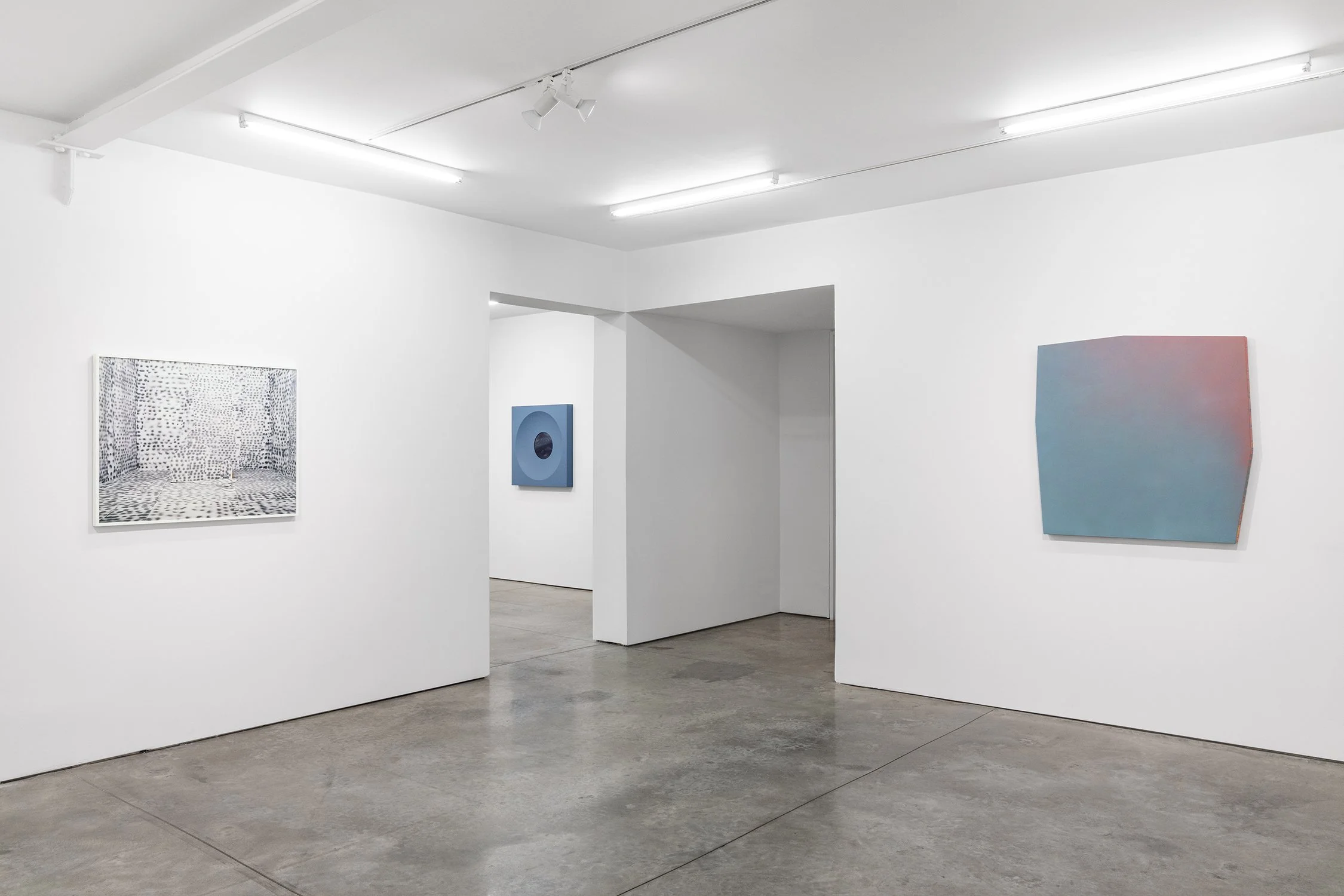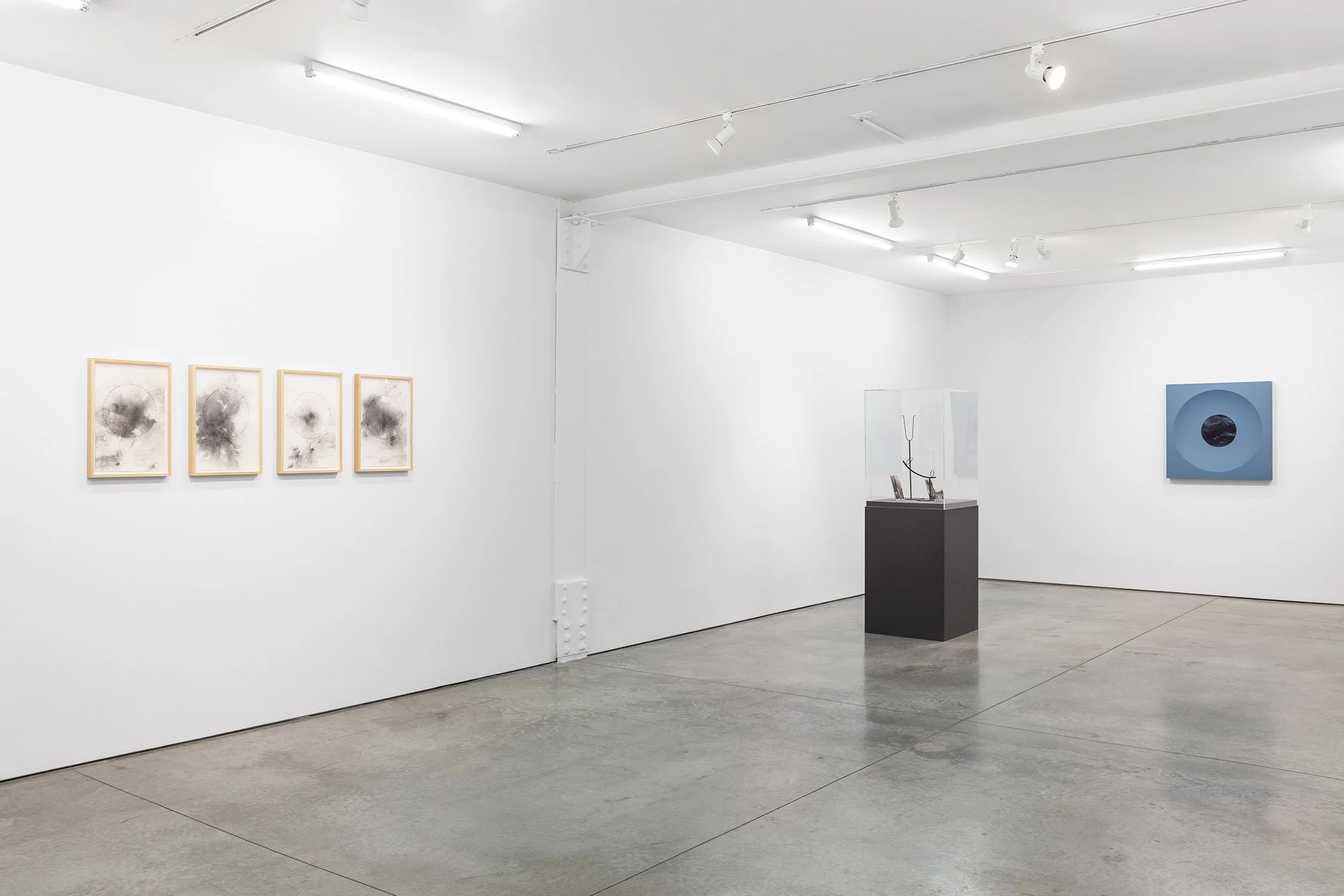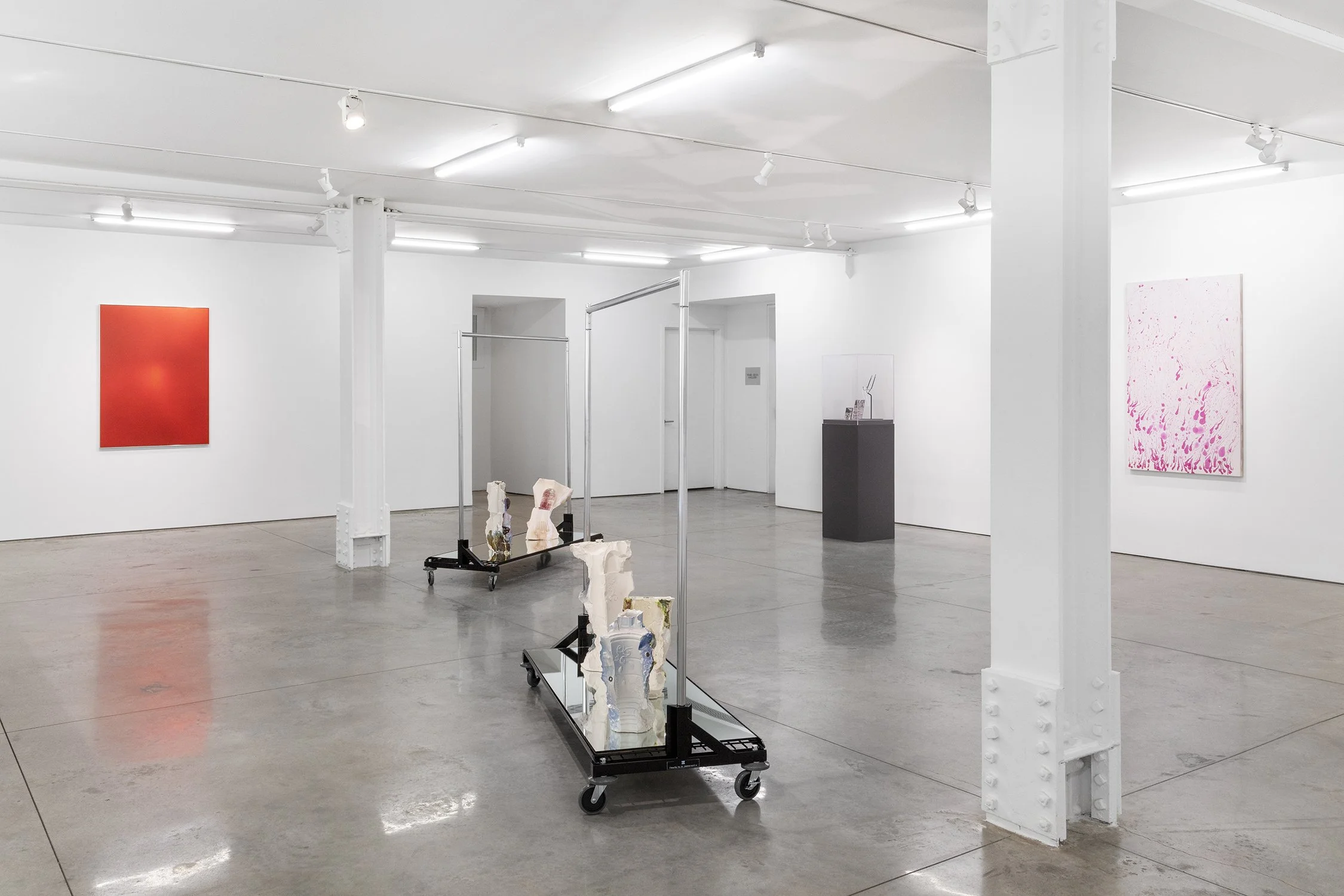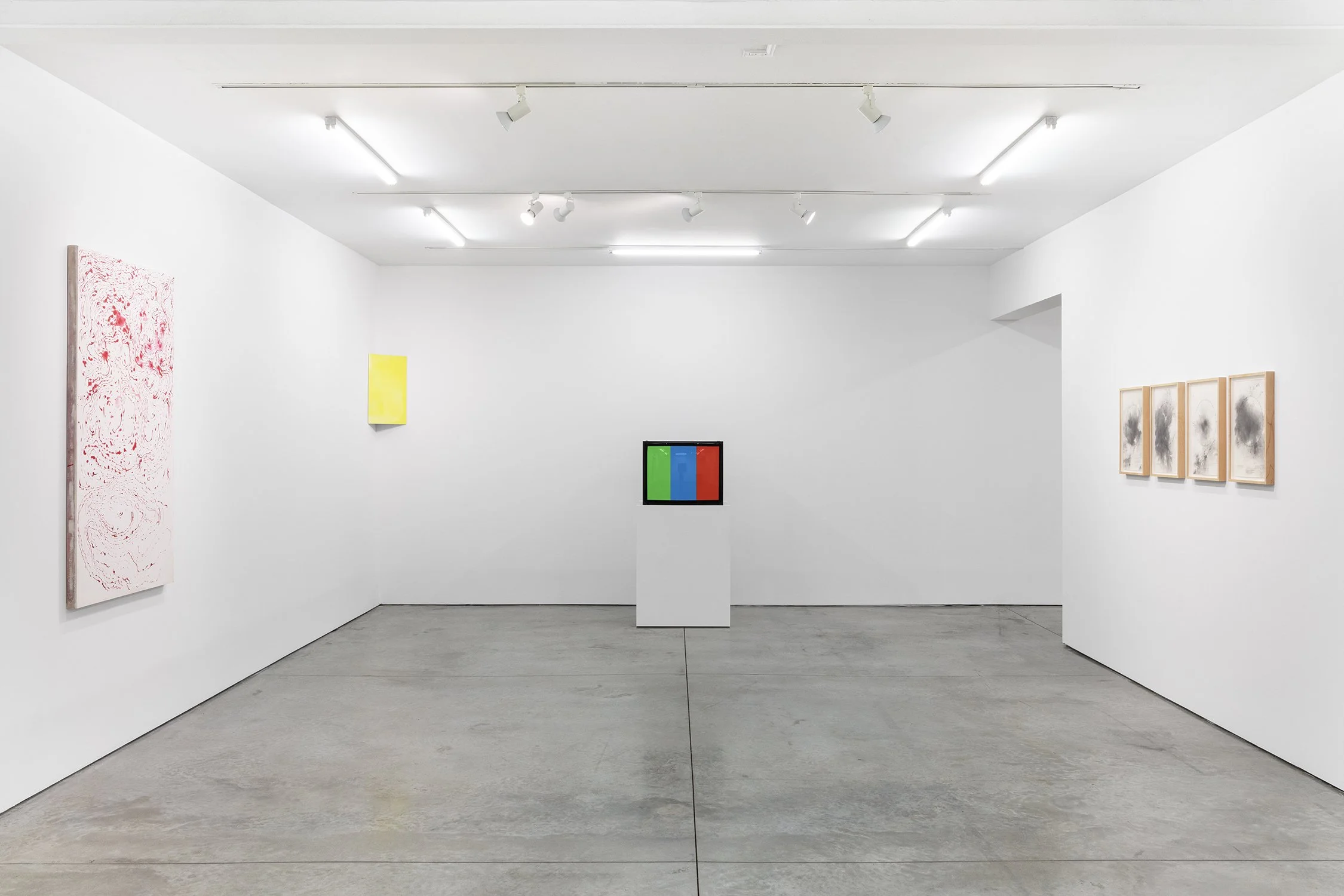The Anti-Image in the Age of Visual Noise
In an era defined by information overload and image saturation, artists face a paradox. Visibility no longer guarantees revelation. Today, images proliferate algorithmically and endlessly to the extent that vision risks becoming numb, aestheticized, and flattened. Against this backdrop, the group exhibition Victory Over the Sun at RYAN LEE Gallery draws its conceptual anchor from the 1913 Futurist opera of the same name, where Kazimir Malevich’s first Black Square iteration made its debut. Working against a world consumed by an endless flow of images, the exhibition features 11 artists whose work gestures toward a kind of anti-image as a mode of resistance, negation, and contemplation. In the spirit of thwarting the usual promise of the image, selected works resist material, narrative, and conceptual legibility and coherence. They destabilize meaning and clarity and, instead, claim space for the things that can’t be easily captured in a reconsideration of contemporary visuality and the instruments that construct it.
Victory Over the Sun was an opera of negation. It aestheticized the rejection of narrative, realism, and rational thought, with Malevich’s Black Square functioning as both culmination and rupture. The iconic painting pluralistically stood for a metaphysical void, an image of both nothing and everything, and the zero point of shape, color, and painting itself. In this exhibition, artists inherit and reanimate this gesture not as pure formalism, but as an embodied critique of today’s visual economies.
Hovering in a space of perceptual and processual ambiguity, Anicka Yi’s Tensor Facia Latae (2022) is a lenticular print nestled inside a concave foam frame. Faint imagery of biomorphic forms eludes fixed interpretation, operating less as representation than as sensation and inviting viewers into a perceptual feedback loop of attraction, estrangement, and uncertainty. A refusal to stabilize form or mood gives the work a charge of quiet urging of the persistence of life as a form of survival that endures even in the face of catastrophe.
Gina Osterloh enacts abstraction and mark-making as gestures of self-representation and disruptions of legibility in Flat Copy (Misregistered) (2010). In this cleverly composed photo tableaux, the body becomes both subject and medium, resisting capture as it disappears into camouflaged flatness. Its surface oscillates between revelation and withdrawal in a meditation on the limits of recognition and thus moves toward a rigorous and poetic investigation of how bodies are seen, sensed, and situated within systems of vision and representation. Here, the portrait and its presumptions are undermined, instead approaching the image as a site of rehearsal and refusal, where form is never fixed and meaning emerges through opacity.
Engaging color theory, symbolic geometry, and a curved canvas, Corinne Jones explores temporal uncertainty in Casting Out Sevens, 34 (2025). The painted work obliquely meditates on the tension between human and geological timescales, contemplating the fleeting mark of personal and social experience set against the vast, indifferent continuum of deep time. In this work, time becomes both an abstraction and a lived, accumulated force. Its subtleties invite viewers into a temporal encounter that is as much about memory and return as it is about movement and progression. In this sense, the work becomes a kind of durational philosophy as it embodies a reflection on the structures, sequences, and sensualities that shape our experience of time.
Both Liz Deschenes and Barnett Cohen use a reflective surface to produce a recursive perceptual loop in which the act of looking is folded back onto itself. Deschenes’s Claude Glass (2023) is a framed, wall-mounted work that shares a subtly convex surface with the 18th century device of the same name. A Claude glass is a small, black mirror once carried by landscape artists and travelers used to conjure a painterly reflection of the surrounding environment. Here, enlarged and abstracted, the form retains the Claude glass’s enigmatic function of turning one’s gaze away from the world in order to see it differently. In this work, we encounter the environment behind us in its shiny, black reflective surface, but where the original Claude glass framed the picturesque, this contemporary iteration withdraws from representation. Its dark surface is both mirror and void, reflecting a diffuse, unstable trace of the viewer’s own body and the surrounding space. The use of this pre-photographic device stages a subtle refusal of clarity toward a more contemplative surface that absorbs and refracts as much as it reveals, inviting us to study the uneasy forces between observation, orientation, and an encounter with an unsettling void.
Cohen’s spectral 47362451-9100263397 (2025) has a bright, reflective surface achieved by an amber mirror acrylic sheet. It has the appearance of an unstable image: uncannily active and somehow lit from within. These chosen materials draw on the recursive logic of visual media itself, reminding us how the doubling of the world in images leaves us only with its traces.
Works by Stephanie Syjuco, Stewart Uoo, Phil Chang, CFGNY, Bethany Collins, and Kota Ezawa further enrich the exhibition’s thematic scope through experiments with different media, textures, and forms: painting, lenticulars, mirrors and other reflective surfaces, a CRT monitor, glazed ceramics, paper, metal, and more echo the opera’s euphoric abstraction while responding to a different kind of excess found in the algorithmic overproduction of content, the weaponization of visibility, and the aestheticization of surveillance. Across these works, spirituality and resistance use opacity to escape resolution and control. The anti-image thus becomes not only a critical refusal but also a speculative portal to a space where the absence of certainty and the limits of knowing are contemplated.
This exhibition invites a slower pace, asking us to sit with the work, cultivating attention in a time of distraction. This makes room for emptiness as a generative gesture, calling us to linger and resist the habitual velocity with which we usually consume images and works of art. We can’t help but actively question the conditions under which images ordinarily circulate, signify, and dominate daily life. Following the ethos of Black Square, the works in Victory Over the Sun are far from being optimized for the curated surface of social media and instead withhold clarity to challenge the viewer to look and think beyond the frame. In this way, they stage a visual coup. Where the image saturates and signals, here the anti-image withdraws and veils, stubbornly remaining in the threshold between stasis and restless possibility.
Victory Over the Sun is on view at RYAN LEE Gallery from June 26 through August 15, 2025.





